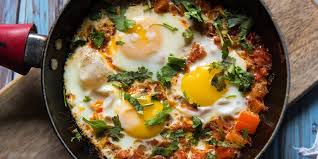F.P. Report
PESHAWAR: Insulin is a hormone that plays a vital role in how your body cells obtain energy to function properly. After meals, some of the food you eat is broken down into a sugar called glucose, causing a normal increase in blood sugar levels. In response, the pancreas releases insulin, which signals the body to move sugar out of the blood and into the muscle, liver and fat cells for energy.
According to the Centers for Disease Control and Prevention (CDC), when the body is insulin resistant, it doesn’t respond as efficiently to release insulin. As a result, the pancreas releases more and more insulin to counteract the decreased sensitivity and return the blood sugars to healthy levels.
Over time, the pancreas can’t keep up with the increased demand for insulin, meaning that blood sugars are less able to return to normal levels, which results in elevated blood sugars. Insulin resistance is a precursor to several health concerns, including prediabetes, type 2 diabetes, polycystic ovary syndrome (PCOS), non-alcoholic fatty liver disease and obesity, per StatPearls. What Causes Insulin Resistance? It’s pretty challenging to pinpoint exactly what causes insulin resistance.
And, it can lurk for many years before symptoms are apparent, making it difficult to diagnose. However, factors like genetics, a sedentary life, a high-calorie, high-sugar diet, elevated LDL cholesterol and obesity may increase your risk of insulin resistance. Insulin resistance can impact your weight because the excess blood sugars are stored as fat, particularly visceral fat—fat around the abdomen and organs, notes the Obesity Medicine Association. That said, losing weight is one of the many steps that can help improve insulin resistance.
To support a healthy weight loss for most people, we set this plan at 1,500 calories a day and included lots of fiber and protein to support healthy blood sugar levels and improve satiety. We included modifications for 1,200 and 2,000 calories per day for those with other calorie needs.
As with all meal plans, this is meant to be a framework for a nutritious eating routine. If there’s a swap you’d prefer, or you grab dinner with a friend one evening, don’t fret.
The idea is to start cooking more meals at home and eating regular meals and snacks with plenty of protein, fiber, fruits and vegetables. Perfection is not required to reap the benefits of this eating plan. Foods to Focus On Vegetables Fruit, such as berries, pears, apples and more Whole grains (brown rice, quinoa, freekeh, whole-wheat, bulgur, oats and more) Lean protein Eggs Fermented dairy (yogurt, kefir) Fish Healthy fats (like olive oil and avocados) Nuts and seeds, including natural nut butters (with no added sugar) How to Meal-Prep Your Week of Meals Make Chopped Salad with Chickpeas, Olives & Feta to have for lunch on days 2 through 5. Prepare Maple Granola to have with breakfast throughout the week.







